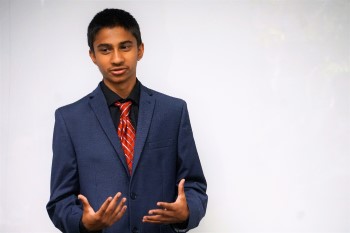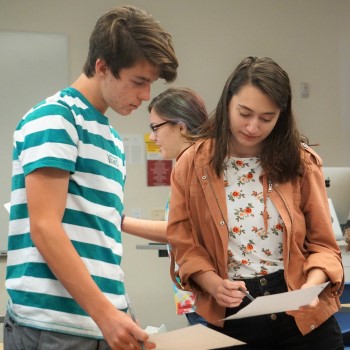How to Help Students Find Their Career
June 24, 2021
The Difference Between a Career and a Job
 In a person’s life, they might be hired for many different jobs. This is becoming even more commonplace today. A job signifies a position a person is hired for in a company. When a student is young, they are thinking and looking for potential jobs that they could get after their schooling. The primary motive for pursing a job is simple, money (either immediate or future wealth). The issue with this approach is that when a student’s only focus is on money, it distracts them from personal development. Ironically, when a student neglects personal development, they end up making less money.
In a person’s life, they might be hired for many different jobs. This is becoming even more commonplace today. A job signifies a position a person is hired for in a company. When a student is young, they are thinking and looking for potential jobs that they could get after their schooling. The primary motive for pursing a job is simple, money (either immediate or future wealth). The issue with this approach is that when a student’s only focus is on money, it distracts them from personal development. Ironically, when a student neglects personal development, they end up making less money.
Focusing on a single job is shortsighted. It doesn’t help students look into the future and identify their overall objective in life. In high school, the type of jobs students qualify for are limited and many of the jobs do not allow student’s to develop the skills they will need to qualify for their future careers. A career does not just look at a particular job. A career looks at a student’s end goal and develops a path that a student will take to get there. That is why it is often called a career path. It is constantly connecting a student’s current job with the future. Thus, in a person’s career, they might have many different jobs, but their career focus will help them to understand why they have a certain job and what their next step should be.
The Importance of a Career
A student’s end goal in life will change multiple times—this usually means that they will have jobs that end up being unfulfilling. The continual focus on a student’s end goal will help them quickly get on the right track when they deviate from what they really want.
The Leadership Society of Arizona has been researching the difference between students that start to find their career when they are young and those that just focus on finding a job. We have found that when students develop their careers at a young age, they are more likely to:
- Develop a plan for their life
- Identify their natural talents and skills (their expertise)
- Find what they love to do
- Find a fulfilling jobs that they enjoy
- Work to add value to society and not just for the money
- Excel at the jobs they get and make more money in the process
These students are also more likely to have the following characteristics:
- Confident
- Happy
- Proactive
- Responsible
- Motivated
Since 2013, LSA has taught over 2,400 students. After completing courses and coaching for personal development and career exploration, 55% of students feel more confident, 62% feel happier, 68% feel more accountable, and 61% are less stressed.
Developing a career path helps to ensure that a student will be successful and find good jobs. It helps them to develop leadership skills, identify what will make them happy, and give them a vision of doing something that will add value to society.
Steps to Finding a Career
Helping a student find a career is more difficult than just helping them find a job. In finding a career, students need help with:
- Identifying what they are good at and what they enjoy.
- Developing a vision of their future if they continue on a certain path.
- Creating a actionable plan to achieve their vision.
 Finding a career is not about following a series of steps, it’s more like a continuous cycle. A person is always developing their career, it is not something that ever comes to an end. Fortunately, the cycle is simple and easy to follow:
Finding a career is not about following a series of steps, it’s more like a continuous cycle. A person is always developing their career, it is not something that ever comes to an end. Fortunately, the cycle is simple and easy to follow:
The start of a career is creating a vision. What does the student want? What are they good at? What do they enjoy? What is their dream? What do they want to do to improve society or create a better world?
These are all questions where the answers will develop the student’s vision. It is important to know that you don’t need a fully developed vision and you don’t need to spend a lot of time developing a vision. A student’s vision just needs a starting point. For each student it will be different.
The next step is creating a plan. From the vision you need some type of plan that helps the student identify actions that they will take to achieve their vision or increase their vision. What types of jobs or internships will they need? Do they want a job, or maybe go for an unpaid internship?
The plan should also identify a timeline to help them know how long things will take or how long they should do things for. It should identify the training and education they will need. For example, will they need a graduate degree? Will they need to go to medical school? Or will they need to go to a trade school or be an apprentice to a journeyman? The plan should help the students know what to do. As with the vision the plan doesn’t have to be perfect, it will continually be adjusted and developed.
Once the plan is created, it is time for the student to follow it and take action. Taking action is simple—the student does what the plan tells them to do. Thus, the plan needs to identify what the student should do immediately. Taking action is the most important part of the cycle, because it is the action and doing something that really helps a student learn and grow. Taking action gives them new insight into who they are, what they like to do, and the possibilities on what they could do.
After taking action, It’s time for reflection. Reflection is the process of looking at what the student learned from taking action and using it to adjust their vision and their plan. After the student reflects, they complete the cycle and will start the process again.
5 Things You Can Do to Help
There are many different things parents and teachers can do to help a student go through the cycle to develop and find a career. The following are 5 ideas that you can do with a child or student:
- Talk with Them About a Career – One of the best things an adult can do is just talk with a student and help them develop their ideas on what they want to do. Help them think about what type of job they are looking for and what options are open to them.
- Write it Down – A student is more likely to learn and understand more if they write something down. Helping a student write out a vision or a plan will help them get to the “take action”. There are many creative ways to do this. It could be a collage of pictures, something written and decorated in a theme, or a simplified template that helps the student become motivated to do it.
- Identify an Action – Sometimes going through the entire cycle is too much for a student. The most important part of the cycle that will help a student learn is getting them to act! Thus, if you identify an action that they are willing to try, this will help them indirectly develop a greater vision and plan.
- Field Trip / Internship – One of the best ways to help a student become motivated to develop a career is by letting them see what it looks like. Allowing them to visit office sites, spend time with professionals, and find opportunities where they can actually do the work.
- Trial and Error – When a student has ideas, one of the best things an adult can do is allow them to try out their ideas and provide resources and support to enable them to try different things. I call this trial and error, because usually the student will do many things that will result in a loss, wasted time/resources, or end up doing nothing. However, for the student going through the effort of doing it, they will learn quite a bit. They will also gain confidence in themselves the more they do things. Keep in mind, many students might not want to do things that you want them to do.
About the Author
Read more about Dr. Jacob’s latest book.
Dr. Jacob Kashiwagi is business management consultant and acting Chairman of the Board for Leadership Society of Arizona. Dr. Jacob has worked on 1,100+ industry projects valued at $3.6 billion with a 95% success rate. He has taught over 1,300 college students and 2,500 high school students.

